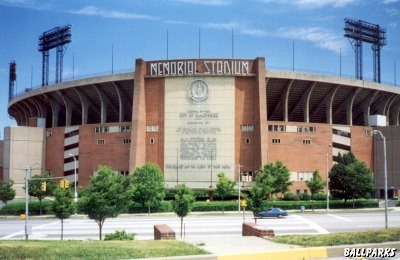Nickel and diming on construction of the new baseball stadium
 Check out the Ballparks.com website, for their section on Baltimore's old Memorial Stadium. Perhaps Memorial Stadium is a better Baltimore example for DC when considering baseball park construction.
Check out the Ballparks.com website, for their section on Baltimore's old Memorial Stadium. Perhaps Memorial Stadium is a better Baltimore example for DC when considering baseball park construction.In "Some Stadium Features May Be Cut," the Washington Post reports on efforts to cut back on "amenities" in the baseball stadium to cut construction costs.
This might sound somewhat hypocritical because I am not in favor of a publicly funded baseball stadium, but at the same time, I am not in favor of building something that is less likely to succeed. More importantly,
how can we ever say it is acceptable to build surface parking lots in the urban core?
I think it is worth re-reading this blog entry from Wednesday, February 23, 2005, "Baseball, Hot Dogs, Apple Pie and Business as Usual," which discusses the importance of traditional neighborhood-fitting stadiums, which also cost a lot less than Camden Yards-type stadia, while still providing all the beauty and attractiveness.
From that entry:
EIGHT IMPERATIVES FOR TRADITIONAL NEIGHBORHOOD BASEBALL PARKS
1. Think always of ballpark design in the context of urban design;
2. Think always in terms of neighborhood rather than zone or district;
3. Let site more than program drive the ballpark design---not exclusively, but more…;
4. Treat the ballpark as a civic building;
5. Make cars adapt to the culture and physical form of the neighborhood instead of the neighborhood adapting to the cars;
6. Maximize the use of pre-existing on- and off-street parking, and distribute rather than concentrate any new required parking;
7. Create development opportunities for a variety of activities in the vicinity of the ballpark, including housing and shopping; and
8. Locate non-ballpark specific program functions in buildings located adjacent to rather than within the ballpark itself.
If we want to make compromises, the baseball stadium might as well just stay at RFK. Build it right, or don't build it.



0 Comments:
Post a Comment
<< Home